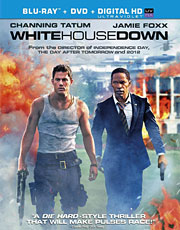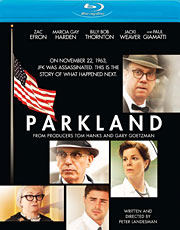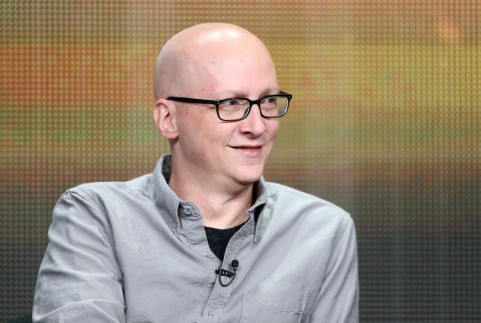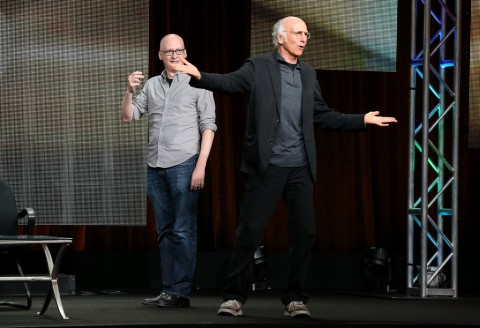Blu Tuesday: White House Down, Parkland and More
Every Tuesday, I review the newest Blu-ray releases and let you know whether they’re worth buying, renting or skipping, along with a breakdown of the included extras. If you see something you like, click on the cover art to purchase the Blu-ray from Amazon, and be sure to share each week’s column on Facebook and Twitter with your friends.
WHAT: While on a tour of the White House with his daughter (Joey King), Capitol policeman John Cale (Channing Tatum) is forced into action when the building is invaded by a group of paramilitary mercenaries looking to kidnap the President of the United States (Jamie Foxx).
WHY: When it was announced that there were two movies in production about the White House coming under attack, I would have put my money on Roland Emmerich to deliver the more entertaining film. But while “White House Down” is amusing in an over-the-top sort of way, Antoine Fuqua’s “Olympus Has Fallen” just barely edges it for me. Whereas that movie was a little more practical with its premise, Emmerich’s film wears its craziness on its sleeve, perhaps best illustrated by an outlandish chase sequence on the White House lawn. It also features more moles than a season of “24,” leading to some pretty impracticable twists. However, “White House Down” does benefit from some great chemistry between Tatum and Foxx, and the supporting cast is excellent, even if many of the actors are wasted in throwaway roles. At the end of the day, though, the two films are actually quite different despite their similar setups. While “Olympus Has Fallen” owes a lot to stealthy action thrillers like “Die Hard,” “White House Down” is a balls-out explosion extravaganza that’s the epitome of popcorn filmmaking.
EXTRAS: There’s no shortage of bonus material on the Blu-ray release, with 13 short featurettes – ranging from production, to casting, to special effects – and a gag reel.
FINAL VERDICT: RENT
WHAT: On November 22, 1963, President John F. Kennedy was assassinated. This is the story of the individuals involved in that tragic day, including the hospital staff at Dallas’ Parkland Hospital, the Secret Service and FBI, the unwitting cameraman (Paul Giamatti) who captured it on film, and the family of Lee Harvey Oswald.
WHY: For as many times as the JFK assassination has been covered in cinema, it’s refreshing to see a film that offers a unique perspective on the matter, much in the same way that Emilio Estevez did with “Bobby.” Unfortunately, “Parkland” is a tale of two halves, and while the former is comprised of some powerful moments as the doctors, Secret Service agents and others scramble amid the chaos of the situation, the latter portion focusing on the days after the shooting isn’t nearly as interesting. The movie’s biggest problem is that there are so many characters that none of them are ever fully developed, though Giamatti’s Abraham Zapruder and James Badge Dale’s Robert Oswald are given more to do than most. With that said, it’s pretty incredible at how many great actors writer/director Peter Landesman was able to cast in the film – some of whom play such small, peripheral roles that they’re only in a scene or two – because it’s the quality of the talent that makes “Parkland” worth watching.
EXTRAS: There’s a director commentary and some deleted scenes.
FINAL VERDICT: RENT
You can follow us on Twitter and Facebook for content updates. Also, sign up for our email list for weekly updates and check us out on Google+ as well.
Posted in: Entertainment, Movies
Tags: Blu Tuesday, Clear History, Girl Most Likely, new Blu-rays, Parkland, White House Down














